Table of Contents
The Modern Cybersecurity Imperative: Why Security+ SY0-701 Matters
The CompTIA Security+ certification is recognized globally as a premier credential that validates the essential skills required for core security functions and a successful career in IT security.1 As the most widely recognized certification of its kind, it is designed to establish a professional’s capabilities in securing networks, applications, and devices while ensuring the foundational principles of data integrity, confidentiality, and availability are upheld.1 The current version of this certification, SY0-701, was launched on November 7, 2023, and reflects the latest trends and techniques in an ever-evolving threat landscape.1 It is an invaluable credential for professionals seeking to advance in the dynamic field of cybersecurity.
The certification is distinguished by its focus on practical, hands-on skills that prepare candidates to tackle real-world challenges.1 This emphasis is particularly important for professionals who are looking to transition into cybersecurity from other IT roles, as it helps them build confidence in their abilities by providing a comprehensive overview of cybersecurity fundamentals and principles.3 A key feature of the certification is its vendor-neutrality, which means the skills and knowledge acquired are applicable across a wide range of technologies, platforms, and industries, offering greater career flexibility than vendor-specific credentials.2 Its global recognition is further underscored by its approval by the U.S. Department of Defense (DoD) to meet directive 8140/8570.01-M requirements, a significant advantage for those pursuing roles in government or military sectors.3
The CompTIA Security+ certification serves as a critical entry point within the broader CompTIA Cybersecurity Career Pathway, establishing the core knowledge required for nearly any cybersecurity role.1 It is positioned as the first security certification a candidate should earn, acting as a direct springboard to intermediate-level cybersecurity jobs.3 For many professionals, this credential is a stepping stone to more advanced and specialized certifications, such as CompTIA CySA+ (Cybersecurity Analyst), CompTIA PenTest+ (Penetration Tester), or CompTIA SecurityX.3 By providing a solid foundation, Security+ enables a professional to build and solidify their expertise, positioning them for continued career growth and advancement in the field.3
The Evolving Landscape: A Detailed Comparison of SY0-701 vs. SY0-601
The update from the previous SY0-601 to the current SY0-701 version represents a significant evolution in the CompTIA certification, advancing beyond foundational principles to cover the more sophisticated cybersecurity challenges prevalent today.6 This transition was a necessary step to ensure the certification remains aligned with modern cybersecurity practices, tools, and job roles.6 A critical point for any prospective candidate is the official retirement of the English-language version of the SY0-601 exam, which occurred on July 31, 2024, making SY0-701 the active version for all new candidates.7
Detailed Domain-by-Domain Comparison and Renaming
While both the SY0-601 and SY0-701 exams are structured around five domains, their names, content, and percentage weightings have been revised to reflect a more focused and proactive approach to cybersecurity.6 The restructuring of these domains is a strategic move by CompTIA to better mirror the day-to-day tasks and responsibilities of a security professional.9
For example, the SY0-601 domain named “Attacks, Threats and Vulnerabilities” has been transformed into “Threats, Vulnerabilities and Mitigations” in SY0-701.10 This renaming signals a shift from a reactive mindset—simply understanding what attacks exist—to a proactive one focused on
mitigating potential threats. This aligns the certification with the core objective of modern security operations, which is to reduce risk and prevent harm before it occurs.8
Furthermore, the broad “Implementation” domain from SY0-601 no longer exists as a standalone category in SY0-701.10 Instead, its concepts have been distributed and integrated across the other domains.10 This change reflects how practical implementation is not a separate function but an integrated component of all security activities, whether it involves designing a secure architecture or performing day-to-day security operations.10 This mirrors how cybersecurity practices are integrated across an organization’s entire IT infrastructure, from initial design to daily management. The conceptual similarity between the last two domains in both exams, “Operations and Incident Response” and “Governance, Risk and Compliance” in SY0-601, and their revised names in SY0-701—”Security Operations” and “Security Program Management and Oversight”—similarly reflects an updated perspective on these critical areas.10
The following table provides a clear, side-by-side comparison of the two exam versions.
| Feature | Security+ SY0-601 | Security+ SY0-701 |
| Release Date | November 2020 6 | November 2023 6 |
| Exam Retirement | July 31, 2024 7 | Active 6 |
| Number of Domains | 5 6 | 5 (revised) 6 |
| Focus | Foundational knowledge 6 | Modern cybersecurity practices 6 |
| Emphasis | Theory and basic practices 6 | Real-world threats and hands-on skills 6 |
| New Topics | N/A | Zero Trust, automation, hybrid environments, emerging threats 8 |
| Removed Content | Specific tools/commands, detailed forensics 10 | N/A |
New Topics: A Deep Dive into Zero Trust, Automation, and Emerging Threats
The SY0-701 exam was updated by 20% to incorporate the latest cybersecurity trends.8 This includes a significant expansion of topics such as hybrid environments, automation, zero trust principles, and emerging threats.2
One of the most notable new themes is Zero Trust Architecture. This concept is now a central focus, appearing in both the “Security Architecture” and “Implementation” domains.11 The exam covers the core principles of Zero Trust, such as identity-centric security, continuous verification, and least privilege access.11 Candidates are expected to understand and apply practical concepts like micro-segmentation, which involves dividing a network into smaller, isolated segments to control access, and Zero Trust Network Access (ZTNA).11
Another key addition is the emphasis on security automation and orchestration.1 This reflects the growing need for security professionals to manage threats at scale using automated tools and processes.12 New topics include the implementation of SOAR (Security Orchestration, Automation, and Response) platforms, the use of automated playbooks, and the integration of machine learning into incident response systems.11 Candidates are now expected to have an understanding of automation frameworks, Security as Code principles, and how they apply to the day-to-day operations of a modern security center.11
The SY0-701 also places a renewed focus on emerging threats and advanced attack techniques.11 This includes a deeper look at modern attack vectors such as supply chain attacks, which compromise third-party vendors to gain access to a larger pool of targets.11 The exam also addresses the evolution of ransomware, the increasing threat of AI-powered attacks and deepfakes, and the vulnerabilities of IoT (Internet of Things) and other embedded systems.11 The expanded coverage of
cloud security and hybrid environments ensures that professionals are prepared to secure systems that are located both on-premises and in the cloud.2
Topics De-emphasized or Removed from the SY0-701 Exam
To make way for these new and updated topics, CompTIA has streamlined or removed certain elements from the exam.10 The SY0-701 no longer includes the explicit mention of specific tools and commands for tasks such as network reconnaissance, file manipulation, and forensics.10 Furthermore, detailed objectives on specific attack frameworks like MITRE ATT&CK and the Cyber Kill Chain have been removed.10
The removal of tool-specific knowledge and detailed frameworks is a deliberate move away from rote memorization and toward a broader, more conceptual understanding of security principles.10 This indicates that the exam is now more focused on a candidate’s ability to apply foundational methodologies and principles rather than their knowledge of specific, potentially outdated, tools. This approach makes the certification more durable and relevant in a rapidly changing technology landscape where tools and frameworks are constantly evolving.10 It also reinforces the certification’s core philosophy of being vendor-neutral, ensuring that the skills validated are transferrable and valuable across different platforms and technologies.
Decoding the Exam: Domains, Objectives, and Key Concepts
The CompTIA Security+ SY0-701 exam is structured around five core domains, each with a specific percentage weighting that indicates its importance on the exam.8 This structure provides a clear blueprint for how to prioritize study time and focus on the most critical areas of cybersecurity knowledge.
| CompTIA Security+ SY0-701 Exam Domains 13 | Exam Weighting (%) 13 |
| General Security Concepts | 12% |
| Threats, Vulnerabilities, and Mitigations | 22% |
| Security Architecture | 18% |
| Security Operations | 28% |
| Security Program Management and Oversight | 20% |
Domain 1: General Security Concepts (12%)
This domain lays the groundwork for the entire certification by establishing the foundational principles and vocabulary of cybersecurity.9 It is crucial for building a common language for cybersecurity professionals.9 Key concepts include the fundamental principles of Confidentiality, Integrity, and Availability (the CIA Triad), as well as Non-Repudiation and Authentication, Authorization, and Accounting (AAA).1 The domain also requires an understanding of different security controls, classifying them based on their function (e.g., Technical, Managerial, Operational, Physical) and their type (e.g., Preventive, Detective, Corrective).13 Additionally, it covers the importance of formal change management processes to ensure that all changes to an environment are documented and reviewed, thereby preventing the introduction of new security risks.1
Domain 2: Threats, Vulnerabilities, and Mitigations (22%)
This domain focuses on the identification and analysis of modern cybersecurity threats, vulnerabilities, and the techniques used to mitigate them.14 It delves into the various types of threat actors, from unskilled script kiddies to highly capable nation-state actors and ideological hacktivists.13 The exam also covers their motivations, which can range from data exfiltration and financial gain to service disruption or political expression.13 Candidates are expected to explain different types of vulnerabilities, such as improperly configured hardware or software and poorly designed network architecture.17 A significant part of this domain is the ability to analyze indicators of malicious activity and apply common mitigation techniques such as network segmentation, access control, system hardening, and timely patching to secure an enterprise environment.1
Domain 3: Security Architecture (18%)
The objective of this domain is to ensure that a professional can design and implement secure enterprise and cloud-based systems.14 It requires a deep understanding of the security implications of different architecture models, including on-premises, cloud, virtualization, IoT, and hybrid environments.1 The concepts of logical segmentation and air gaps are central to this domain, explaining how systems can be isolated to prevent lateral movement by attackers.19 The domain also covers the crucial area of data protection, detailing strategies for securing data through classification, methods like encryption, and the application of cryptography concepts, including Public Key Infrastructure (PKI) and digital signatures.1 Finally, it emphasizes the importance of resilience and recovery in security architecture, with concepts such as high availability, business continuity planning (BCP), and disaster recovery plans (DRP) to ensure an organization can withstand and recover from a disruption.1
Domain 4: Security Operations (28%)
As the largest domain, this section focuses on the day-to-day work of a cybersecurity professional, from monitoring and detection to incident response.8 The exam covers the application of security techniques to computing resources, including securing baselines, mobile solutions, and wireless security.1 It emphasizes the importance of a well-defined vulnerability management lifecycle—identifying, analyzing, remediating, validating, and reporting vulnerabilities.1 The domain also delves into identity and access management (IAM), covering the implementation of concepts like provisioning, single sign-on (SSO), multifactor authentication (MFA), and different access control models (e.g., Role-Based Access Control).1 Finally, it requires an understanding of incident response activities, including the processes, training, and digital forensics required to contain, eliminate, and recover from security incidents.1
Domain 5: Security Program Management and Oversight (20%)
This domain shifts the focus from purely technical operations to the broader, organizational-level aspects of cybersecurity.9 It covers the elements of effective security governance and the entire risk management process, from identifying and assessing risks to implementing mitigation strategies and managing third-party risk.1 A key part of this domain is understanding and ensuring compliance with relevant legal and industry regulations, such as GDPR and HIPAA.15 This includes summarizing the consequences of non-compliance and explaining the purpose of audits and assessments.1 The domain also highlights the human element of security by covering the importance of security awareness programs, which can include topics like phishing training and recognizing anomalous behavior.1
The Path to Certification: Exam Logistics and Study Strategies
To earn the CompTIA Security+ SY0-701 certification, candidates must pass a single exam consisting of a maximum of 90 questions, which are a mix of multiple-choice and performance-based questions.1 The exam has a duration of 90 minutes, and a passing score of 750 on a scale of 100-900 is required.1
Anatomy of the Exam: Multiple-Choice and Performance-Based Questions (PBQs)
The inclusion and expanded focus on Performance-Based Questions (PBQs) is a direct reflection of industry demand for job-ready candidates with practical skills.3 PBQs are designed to go beyond theoretical knowledge by simulating real-world scenarios.3 They require a candidate to apply their knowledge to solve problems, such as configuring security settings, identifying vulnerabilities from log data, or setting up access policies based on a given scenario.3
This format ensures that a certified professional can not only recall foundational knowledge but also apply it effectively in a hands-on environment, a skill highly valued by employers who need candidates who can “hit the ground running”.3 This is particularly evident with the new focus on Zero Trust, where new PBQs related to identity verification, access policy configuration, and network segmentation have been introduced to test practical implementation skills.11
Essential Study Resources
A comprehensive study plan should include a mix of official and reputable third-party resources. The official CompTIA website offers a wealth of information, including blogs, research, case studies, and training products like CertMaster.20 Additionally, many candidates find value in third-party training platforms that provide structured courses, practice exams, and virtual labs to reinforce concepts.15
A strong word of caution is necessary regarding unauthorized study materials. CompTIA explicitly prohibits the use of “brain dumps,” which are sites that provide memorized exam questions and answers.23 Relying on these materials risks not only failing the exam but also having any earned certification permanently revoked.23 A successful candidate instead focuses on understanding the core concepts and their application, preparing them for a long-term career rather than just a single exam.
Your Career Launchpad: Job Roles and Financial Opportunities
The CompTIA Security+ certification is a highly regarded credential that opens the door to a wide range of job opportunities in the high-demand field of cybersecurity.3 The U.S. Department of Labor Statistics projects that cybersecurity jobs will grow 31% through 2029, a rate more than seven times the national average, highlighting the significant demand for skilled professionals.25 The certification is a gateway to a variety of roles across different career paths, from cybersecurity to IT infrastructure.25
The following table outlines several common job roles for Security+ certified professionals and their corresponding average salary ranges.
| Job Role | Average Salary (USD) | Role Description |
| Security Analyst 24 | $113,812 24 | Monitors, assesses, and defends IT systems against potential threats.24 |
| Security Administrator 25 | $70,000 – $90,000 24 | Installs and manages network security systems and protocols.25 |
| IT Auditor 25 | $70,000 – $90,000 24 | Evaluates IT infrastructure and processes to ensure security and regulatory compliance.25 |
| Penetration Tester 24 | $85,000 – $120,000 24 | Simulates cyberattacks to identify vulnerabilities and strengthen defenses.24 |
| Systems Administrator 25 | $65,000 – $85,000 24 | Manages and secures a company’s network, servers, and computer systems.25 |
| Cybersecurity Consultant 24 | $95,000 – $140,000 24 | Advises organizations on improving their overall security infrastructure.24 |
Median Salary Expectations and Factors Influencing Earning Potential
On average, professionals with a Security+ certification earn between $70,000 and $90,000 annually in the United States.24 However, these figures can vary widely based on several factors, including location, industry, and years of experience.5 For individuals just starting in the field, entry-level roles often command salaries closer to the $50,000 to $65,000 range, with the average for entry-level professionals with the certification at $71,697.5
The data shows a clear salary progression tied to experience. Mid-level professionals with two to five years of experience can expect to earn between $70,000 and $90,000, while senior-level professionals with five or more years of experience can command six-figure salaries.24 This demonstrates that the certification is a smart long-term investment that provides a foundational credential for higher-paying roles as a professional gains experience. Furthermore, location and industry play a significant role. For example, cybersecurity salaries in tech-forward cities like New York City or San Francisco are significantly higher than the national average.5 Similarly, certain industries, such as aerospace and defense or financial services, offer higher median pay for security professionals.5
Conclusion: A Strategic Investment in Your Future
The CompTIA Security+ SY0-701 certification is more than just a credential; it is a meticulously crafted blueprint for a modern cybersecurity career. By aligning foundational knowledge with in-demand skills and real-world, practical applications, the exam prepares candidates to meet the sophisticated challenges of today’s threat landscape. The strategic updates to the SY0-701 version—particularly the expanded coverage of Zero Trust, security automation, and emerging threats—ensure that certified professionals possess the most current and relevant skills.2
Earning this certification provides significant benefits, including global recognition, DoD approval, and a direct pathway to a high-demand and lucrative career.3 It serves as the ideal launchpad for professionals seeking to enter or advance within the cybersecurity field, providing a foundational credential that opens the door to a wide variety of roles and supports long-term career progression.3 In a field defined by constant change, a foundational security certification like SY0-701 remains a vital starting point for a professional’s journey of continuous learning and growth.
Reference links:
- Security+ (Plus) Certification | CompTIA, https://www.comptia.org/en-us/certifications/security/
- Preparation guide : CompTIA Security+ SY0-701 Certification – Whizlabs, https://www.whizlabs.com/blog/study-guide-comptia-security-plus-sy0-701/
- 5 Reasons to Start a Cybersecurity Career with Security+ – CompTIA, https://www.comptia.org/en/blog/5-reasons-to-start-a-cybersecurity-career-with-security/
- CompTIA Security+ SY0-701 – Educate 360, https://learn.educate360.com/courses/comptia-security-sy0-701
- Boost Your Cybersecurity Career: Exploring Security+ Certification Salaries and Benefits, https://destcert.com/resources/security-plus-salary/
- CompTIA Security+ 601 vs. 701: Understanding Key Differences – Sprintzeal.com, https://www.sprintzeal.com/blog/comptia-security-601-vs-701
- What are the differences between the CompTIA Security+ SY0-601 Exam, https://www.professormesser.com/security-plus/security-plus-articles/differences-between-sy0-601-and-sy0-701/
- CompTIA Security+ 601 vs. 701: What’s the Difference? | CompTIA …, https://www.comptia.org/en-us/blog/comptia-security-601-vs-701-whats-the-difference/
- Security+ 601 vs 701: What’s the Difference Between the Exams …, https://www.onlc.com/blog/comptia-security-plus-601-vs-701/
- Choosing the Right CompTIA Security+ Certification: What’s new in SY0-701? | Netizen, https://www.netizen.net/news/post/3826/choosing-the-right-comptia-security-certification-whats-new-in-sy0-701
- SY0-701: What’s New in the Latest Security Plus 701 Exam, https://trainingcamp.com/security-plus-701-whats-new/
- SY0-701 Updates Explained: The 2025 CompTIA Security+ Guide – ExamSnap, https://www.examsnap.com/certification/sy0-701-updates-explained-the-2025-comptia-security-guide/
- CompTIA Security+ Cheat Sheet (Updated for SY0-701 Exam) – StationX, https://www.stationx.net/comptia-security-cheat-sheet/
- CompTIA Security+ Exam Objectives: 5 Key Domains To Know – Easy Prep,https://easy-prep.org/blog/comptia-security-exam-objectives/
- CompTIA Security+ 701 – Coursera, https://www.coursera.org/learn/comptia-security-701
- CompTIA Security+ 701 Practice Exams Flashcards – Quizlet, https://quizlet.com/891095627/comptia-security-701-practice-exams-flash-cards/
- CompTIA Security+ Study Guide (Exam SY0-701) – Lesson 2 Flashcards | Quizlet, https://quizlet.com/918065382/comptia-security-study-guide-exam-sy0-701-lesson-2-flash-cards/
- CompTIA Security+ SY0–701 Acronyms You Can’t Afford to Miss | by unica 02 | Medium, https://medium.com/@Sky_higher_freak../comptia-security-sy0-701-acronyms-you-cant-afford-to-miss-8713ce4b8087
- Network Infrastructure Concepts- CompTIA Security+ SY0-701 – 3.1 – Professor Messer, https://www.professormesser.com/security-plus/sy0-701/sy0-701-video/network-infrastructure-concepts-sy0-701/
- CompTIA: Information Technology (IT) Certifications & Tech Training, https://www.comptia.org/en-us/
- CompTIA Resources, https://www.comptia.org/en-us/resources/
- Cybrary: Cybersecurity Courses & Cyber Security Training Online, https://www.cybrary.it/
- CompTIA certification testing with Pearson VUE, https://www.pearsonvue.com/us/en/comptia.html
- CompTIA Security+ Salary Outlook: How Much Can You Earn? – ONLC, https://www.onlc.com/blog/comptia-security-plus-salary/
- CompTIA Security+ Certification Jobs | Cyber Security Jobs, https://www.cybersecurityjobs.com/comptia-security-jobs/

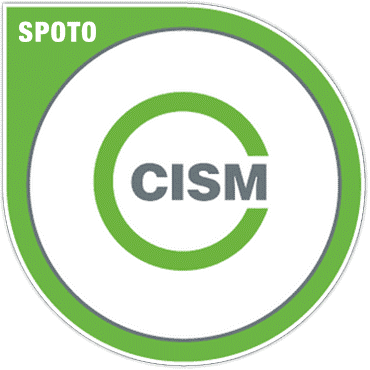


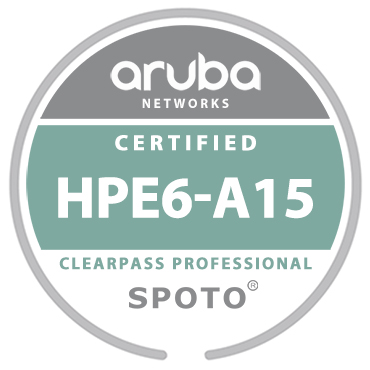
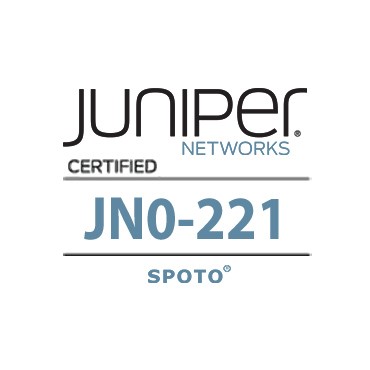
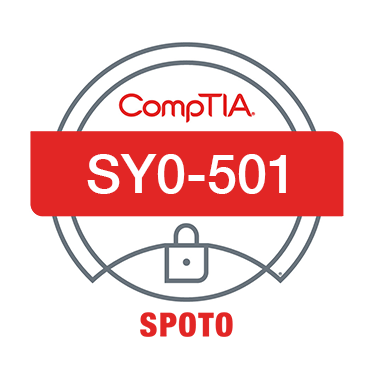
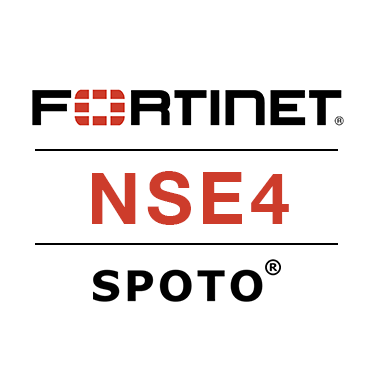
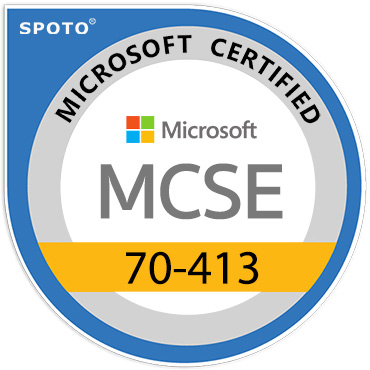

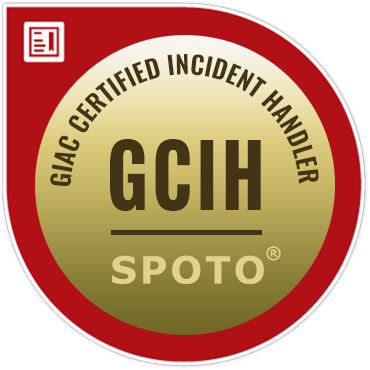
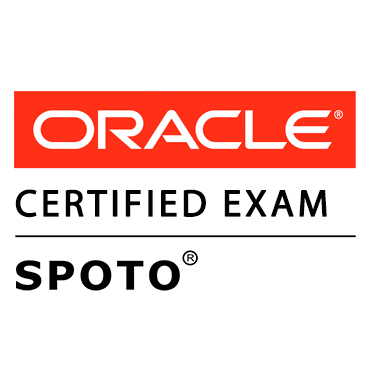
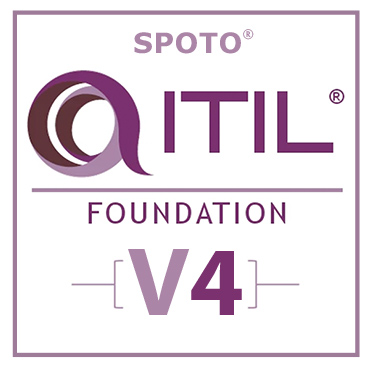





Comments